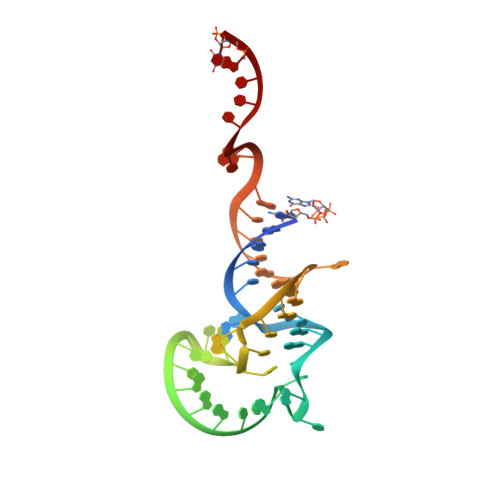The crystal structure of a Polerovirus exoribonuclease-resistant RNA shows how diverse sequences are integrated into a conserved fold.
Steckelberg, A.L., Vicens, Q., Costantino, D.A., Nix, J.C., Kieft, J.S.(2020) RNA 26: 1767-1776
- PubMed: 32848042
- DOI: https://doi.org/10.1261/rna.076224.120
- Primary Citation of Related Structures:
7JJU - PubMed Abstract:
Exoribonuclease-resistant RNAs (xrRNAs) are discrete elements that block the progression of 5' to 3' exoribonucleases using specifically folded RNA structures. A recently discovered class of xrRNA is widespread in several genera of plant-infecting viruses, within both noncoding and protein-coding subgenomic RNAs. The structure of one such xrRNA from a dianthovirus revealed three-dimensional details of the resistant fold but did not answer all questions regarding the conservation and diversity of this xrRNA class. Here, we present the crystal structure of a representative polerovirus xrRNA that contains sequence elements that diverge from the previously solved structure. This new structure rationalizes previously unexplained sequence conservation patterns and shows interactions not present in the first structure. Together, the structures of these xrRNAs from dianthovirus and polerovirus genera support the idea that these plant virus xrRNAs fold through a defined pathway that includes a programmed intermediate conformation. This work deepens our knowledge of the structure-function relationship of xrRNAs and shows how evolution can craft similar RNA folds from divergent sequences.
- Department of Biochemistry and Molecular Genetics, University of Colorado Denver School of Medicine, Aurora, Colorado 80045, USA.
Organizational Affiliation:



















